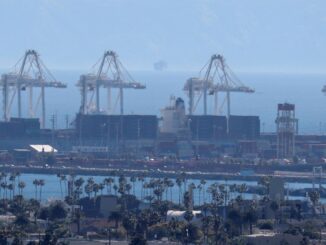
- The Treasury’s deluge of T-bills could force the Federal Reserve to halt quantitative tightening.
- That’s as the debt binge may pressure bank reserves, economists at the St. Louis Fed wrote.
- The Treasury has issued $1 trillion in T-bills since June, and another $600 billion is expected by year’s end.
The US debt binge may force the Federal Reserve to halt its quantitative tightening campaign so the financial system doesn’t become unstable, according to economists at the St. Louis Fed.
The Treasury Department has issued $1 trillion in T-bills since June, when the debt ceiling standoff was resolved, and another $600 billion is expected by year’s end.
Meanwhile, the Fed stopped buying bonds last year and has been shrinking its balance sheet, leaving bank reserves and money market funds as the key sources of funds for purchasing US debt. But a prior quantitative tightening campaign saw a drop in bank reserves, forcing the Fed to do an about-face in 2019 and buy T-bills.
“Although there are currently ample reserves, there is some lower level of reserves that can cause stress in financial markets,” the St. Louis Fed economists wrote in a paper. “So as the Fed continues with QT-II, it will need to evaluate when to slow and stop redemptions to avoid draining too many reserves from the banking system and cause undo financial stress.”
The QT program is a strategy of letting matured bonds run off to reduce the nation’s monetary supply. That’s coincided with an aggressive cycle of rate hikes to get inflation back to the Fed’s 2% target. At the same time, government borrowing has soared as big infrastructure and spending programs ramp up.
Recently, money market funds have largely been on the sidelines of the Treasury’s massive T-bill issuance. That’s because they have been favoring the Fed’s overnight reverse repurchase program, or ON RRP, which has been offering higher returns.
But if too much money flows out of bank reserves to purchase all the US debt hitting the market, then lenders may have trouble meeting regulatory requirements.
The paper warned “there is a risk that ON RRP balances remain sizable and bank reserves represent the majority of the contraction of Fed liabilities as QT continues. In this case, regulatory banking constraints could start binding sooner than expected.”
On top of that, the Fed’s surveys have suggested that banks are preferring to hold bigger reserves.
While the St. Louis Fed’s note estimated that $2 trillion in banking reserves could be the optimal level, the data are signaling higher levels.
“Financial markets keep evolving and desired liquidity may be something closer to 10% to 12% of nominal GDP ($2.7 trillion to $3.3 trillion), with the current level of reserve balances already around the upper bound of the estimate,” the note said.



